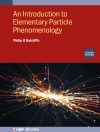This two-volume handbook offers a comprehensive and well coordinated presentation of SQUIDs (Superconducting Quantum Interference Devices), including device fundamentals, design, technology, system construction and multiple applications. It is intended to bridge the gap between fundamentals and applications, and will be a valuable textbook reference for graduate students and for professionals engaged in SQUID research and engineering. It will also be of use to specialists in multiple fields of practical SQUID applications, from human brain research and heart diagnostics to airplane and nuclear plant testing to prospecting for oil, minerals and buried ordnance.
The first volume contains chapters presenting the theory of SQUIDs, their fabrication from low- and high-temperature superconductors, the necessary readout electronics, and the design and performance of practical direct current (dc) and radio-frequency (rf) SQUIDs. This volume concludes with an overview of the most important SQUID system issues. An appendix summarizes briefly the foundations of superconductivity that are necessary to understand SQUIDs. A glossary and tables of units and constants are also included.
The second volume of the handbook will deal with applications of SQUIDs and SQUID systems.
Inhaltsverzeichnis
INTRODUCTION
A.I. Braginski and J. Clarke
JOSEPHSON JUNCTIONS
B. Chesca, R. Kleiner and D. Koelle
SQUID FABRICATION TECHNOLOGY
R. Cantor and F. Ludwig
SQUID ELECTRONICS
D. Drung and M. Mueck
PRACTICAL DC SQUIDS: CONFIGURATION AND PERFORMANCE
R. Cantor and D. Koelle
PRACTICAL RF SQUIDS: CONFIGURATION AND PERFORMANCE
A.I. Braginski and Y. Zhang
SQUID SYSTEM ISSUES
C. Foley, M. Keene, M. ter Brake, and J. Vrba
Appendices
BASIC PROPERTIES OF SUPERCONDUCTIVITY
SYMBOLS, CONSTANTS, ABBREVIATIONS
Über den Autor
John Clarke, University of California, Berkeley ist einer der renommiertesten SQUID-Forscher (Grundlagen) weltweit.
Einen ähnlich herausragenden Ruf hat Alex I. Braginski, ehemaliger Direktor des Forschungszentrums Jülich im Bereich der SQUID-Anwendungen.












